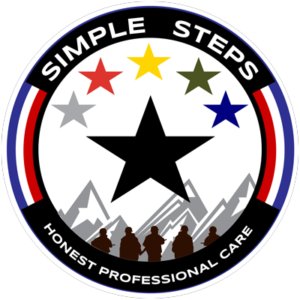Art Therapy For Military Veterans
Simple Steps art therapy programs and classes are designed for military veterans and their families. Through inclusive programming for clients with intellectual, neurological, and/or psychological impairments and challenges, Veterans and their families have access to a holistic, alternative approach to healing. Through Art, Veterans can learn a new method of self expression for enjoyment, stress relief, anger management, and more!
What is art therapy?
Art Therapy is a mental health profession. Art therapy may focus on the creative art-making process itself or on the analysis of expression gained through client and therapist interaction. Art therapy is an effective treatment for persons experiencing developmental, intellectual, social or psychological impairment. A key goal in art therapy is to improve or restore the client’s functioning and his/her sense of personal well being.
Expressive Arts Therapy
Expressive arts therapy is a multi-method approach to therapy similar in some aspects to drama therapy and music therapy. Expressive arts therapy may incorporate writing, drama, dance, movement, painting, and/or music. People utilizing expressive arts therapy are encouraged by a qualified therapist to explore their responses, reactions, and insights through pictures, sounds, explorations, and encounters with art processes. A person is not required to have artistic ability to use or benefit from expressive arts therapy.
